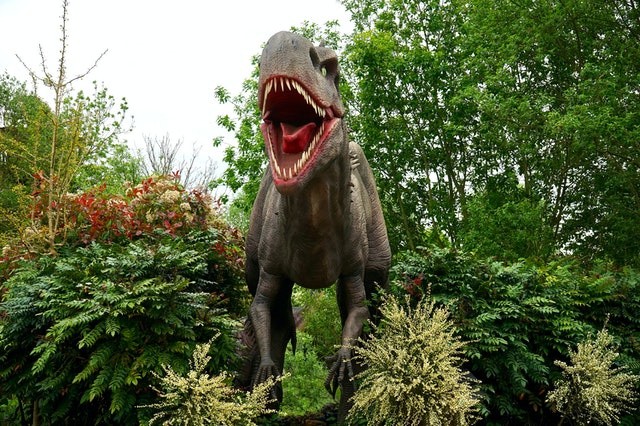A new study suggests that three-toed, carnivorous dinosaurs may have ran as quickly as a modern vehicle. These theropods rushed through mushy lakebed mud some 10 million years ago, leaving behind tracks that paleontologists were able to analyze. Theropod tracks provide an idea of how fast dinosaurs were able to run.

Researchers Analyzed the Footprints of Three-toed Dinosaurs
A new study published in PLOS One used two sets of fossilized footprints from La Rioja (Spain) to calculate "some of the top speeds ever calculated for theropod tracks," according to Live Science.
Scientists analyzed the footprints and found that one dinosaur increased its speed slowly and consistently while running, whereas the other altered its speed suddenly while still moving. As a whole, these two sets of Cretaceous-era footprints provide a unique glimpse into the movement and behavior of dinosaurs at the time.
New research by Pablo Navarro-Lorbés of the University of La Rioja in Logroo in Spain shows that paleontologists can utilize a variety of methodologies to estimate the running speeds of prehistoric dinosaurs.
Five three-toed footprints measuring 12.9 inches (32.8 centimeters) in length by 11.9 inches (30.2 centimeters) wide have been found in the La Rioja tracks named La Torre 6A-14. Three-toed footprints measuring 11.4 inches (28.9 cm) in length and 10.6 inches (26.9 cm) in width were found on La Torre 6B-1, a shorter and narrower track than the other.
This means they would have stood 7 feet (2 meters) tall and been 13 to 16 feet (4 to 5 meters) long, NavarroLorbés estimated based on the size of the impressions found on their hips, which were between 4 and 5 feet (1.1 and 1.4 meters) in length.
Also Read : Meet Spinosaurus: The First Swimming Dinosaur
Calculating the Running Speeds of the Theropods
Theropod footprints can't reveal which species generated them, but the researchers found commonalities that suggested the two dinosaurs belonged to the same taxonomic group, were non-avian (not descended from a lineage that was directly connected to current birds), and were "extremely agile."
The researchers employed a method that took the dinosaurs' hip heights and stride lengths into account when calculating the theropods' running speeds.
NavarroLorbés noted that this allowed them to not only compute the animals' speed with each stride but also identify speed fluctuations "such as acceleration or deceleration."
While the dinosaur that built the 6A-14 trackway could only manage a peak speed of around 23 mph (37 km/h), the 6B-1 dinosaur sprinted ahead with a top speed of about 28 mph (45 km/h).
Fossil Record of Fast-running Theropod Tracks
A human runner has only reached 27.5 mph (44.3 km/h) once before, when Jamaican sprinter Usain Bolt did it momentarily in 2009, according to The New York Times.
In contrast, although Bolt's speed has been well-publicized, extinct dinosaurs have not.
As a result, these footprints from northern Spain offered researchers a unique chance to verify theropod speed estimations previously generated by other scientists who were investigating their bones, Navarro-Lorbés stated in an interview with Nature.com.
"Fast-running theropod tracks are scarce in the fossil record," Navarro‐Lorbés said. "Being able to study them and confirm some other studies made from different approaches are great news for us."
Related Article : Scientists Finally Unlock Dinosaur DNA
For more news, updates about dinosaurs and similar topics don't forget to follow Nature World News!
© 2025 NatureWorldNews.com All rights reserved. Do not reproduce without permission.





